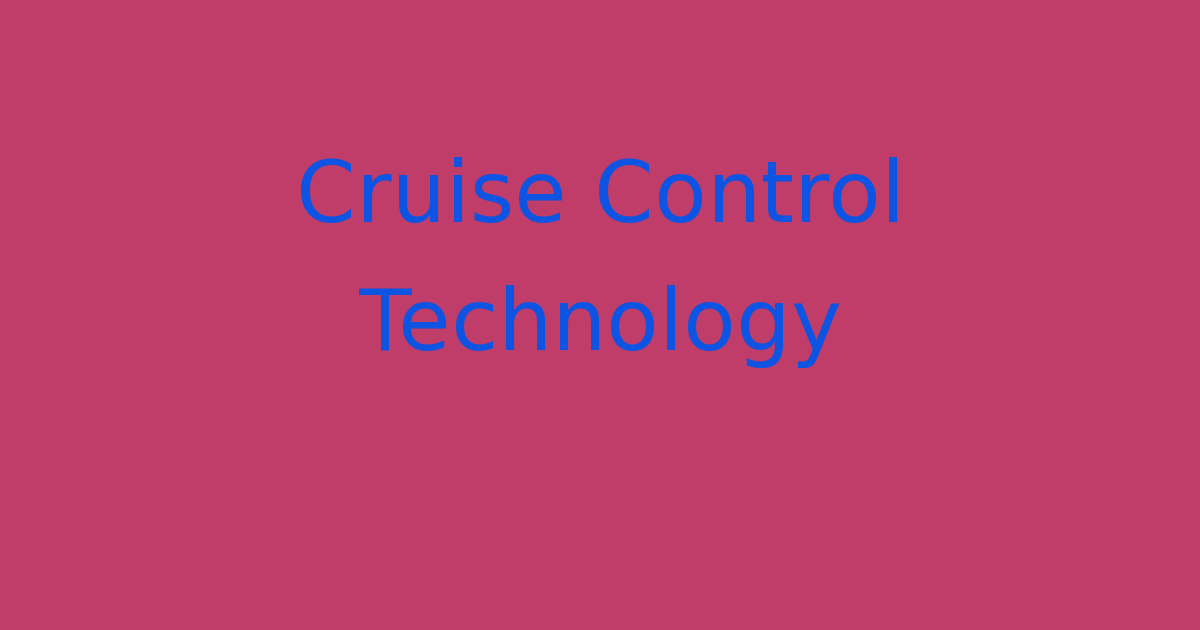Technology that automatically maintains a set speed for a vehicle.
Introduction
In the world of automotive engineering, cruise control technology has become an essential feature in modern vehicles. This technology allows drivers to set a specific speed for their vehicle, which the car can then maintain without the need for constant manual acceleration or braking. Cruise control is especially useful during long drives on highways, where maintaining a consistent speed can not only save fuel but also reduce driver fatigue. However, the existing cruise control systems have some limitations and drawbacks that need to be addressed.
Problem Statement
The current cruise control technology in vehicles lacks the ability to adjust to changing road conditions, such as traffic congestion, inclines, and curves. This limitation can lead to safety risks and inefficiencies in fuel consumption. Additionally, the lack of integration with modern technologies, such as GPS and traffic data, limits the effectiveness of cruise control systems. Therefore, there is a need for an improved cruise control system that can adapt to real-time road conditions and provide a more seamless driving experience for users.
Existing System
The traditional cruise control system relies on a simple mechanism that controls the throttle of the vehicle to maintain a constant speed. The driver sets the desired speed using a control panel, and the system ensures that the vehicle maintains that speed by adjusting the throttle as needed. However, this system does not take into account external factors that can affect the vehicle’s speed, such as hills, curves, or traffic congestion. As a result, the driver may need to frequently intervene to adjust the speed manually, defeating the purpose of cruise control.
Disadvantages
One major disadvantage of the existing cruise control systems is that they are not integrated with other advanced technologies, such as GPS and real-time traffic data. This lack of integration limits the system’s ability to adapt to changing road conditions and provide a more efficient driving experience. Additionally, the traditional cruise control systems do not have the capability to adjust the vehicle’s speed based on external factors, such as upcoming hills or curves. This limitation can lead to safety risks, as the driver may need to manually intervene to maintain a safe speed.
Proposed System
To address the limitations of the existing cruise control systems, we propose the development of an advanced cruise control system that integrates with modern technologies, such as GPS and real-time traffic data. This new system will use data from these sources to adjust the vehicle’s speed based on external factors, such as traffic congestion, inclines, and curves. Additionally, the proposed system will have the capability to learn from the driver’s behavior and preferences, providing a more personalized and seamless driving experience.
Advantages
The proposed cruise control system offers several advantages over the existing systems. Firstly, the integration with GPS and real-time traffic data will enable the system to adapt to changing road conditions, reducing the need for manual intervention by the driver. This will not only improve safety but also increase fuel efficiency by maintaining a more consistent speed. Additionally, the system’s learning capabilities will allow it to personalize the driving experience for each user, offering a more comfortable and convenient journey.
Features
The new cruise control system will come with several key features that set it apart from the existing systems. Firstly, the system will have a user-friendly interface that allows drivers to easily set their desired speed and adjust other settings as needed. Secondly, the integration with GPS and real-time traffic data will provide the system with accurate information about the road conditions, enabling it to make real-time adjustments to the vehicle’s speed. Lastly, the system’s learning capabilities will allow it to adapt to the driver’s preferences over time, providing a more personalized driving experience.
Conclusion
In conclusion, cruise control technology has come a long way since its inception, offering drivers a convenient way to maintain a consistent speed while on the road. However, the existing cruise control systems have limitations that need to be addressed to improve safety and efficiency. The proposed advanced cruise control system aims to overcome these limitations by integrating with modern technologies and providing a more personalized driving experience for users. By implementing this new system, we can enhance the functionality and effectiveness of cruise control technology, making driving a more enjoyable and stress-free experience for all.

